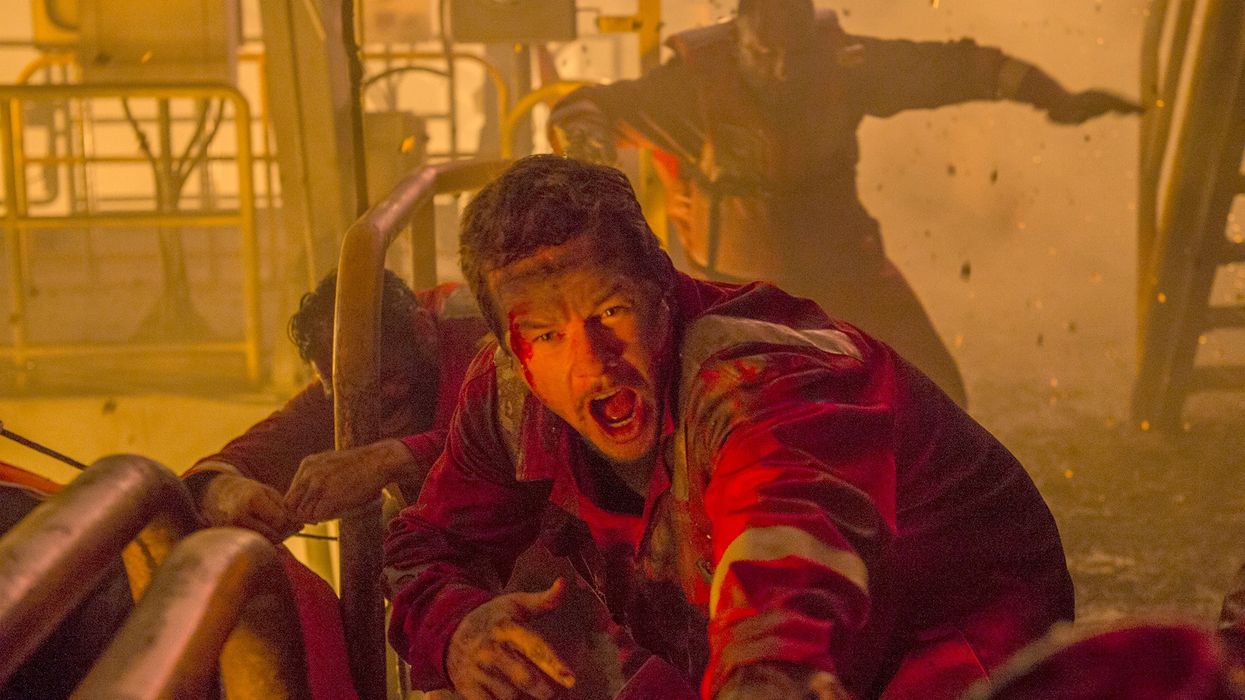How 'Deepwater Horizon' Editors Played with Parallel Narratives
Based on the true story of bravery and perseverance.

Of the 126 crew members, 11 lives were lost when the Deepwater Horizon drilling rig exploded off the coast of Louisiana on April 20, 2010. It’s a story that nearly got lost as the conversation swiftly shifted to how to stop the 50,000 barrels of oil spewing into the Gulf of Mexico daily. Deepwater Horizon, directed by Peter Berg and edited by Colby Parker Jr. and Gabriel Fleming, sought to detail the heroism these workers displayed.
"This film is about the courage and the atrocity that took place on the rig," Parker Jr. told No Film School. "There are a lot of facts out there about the environmental impact and its aftermath, but we didn’t want those 11 people who died to be forgotten."
The editors created a parallel story within a story until the two narratives lead up to explosion and disarray.
Though the story’s mythic dimension came together in the cutting room, it all began when production designer Chris Seagers and his team built a replica of the Deepwater Horizon to 85% scale. It took 85 welders eight months to create the rig in three separate parts—a set constructed in New Orleans utilizing 3.2 million pounds of steel and featuring a functioning helipad.
Pairing ARRI Alexa 65s and Alexa XTs with Leica Summicron-C and Summilux-C lenses, Berg and cinematographer Enrique Chediak captured the devastation in camera, relying on visual effects only as a secondary tool. "Some of the first scenes Peter shot were of the explosion, and it was very inspiring to see how much was done in-camera," Parker Jr. said. "We made a sizzle reel from those dailies and played them to the crew. It really inspired them and helped with morale."
Encountering real-life survivors Mike Williams (Mark Wahlberg) and floor-hand Caleb Holloway (Dylan O'Brien) helped delineate the editing process. "It wasn’t planned, but before we started shooting I was down there with Peter and met them," Parker Jr. remembered. "Mike served as a consultant on the film and they were extremely generous with their stories. We picked their brain about events and if something scripted wasn’t true, we wanted to know what actually happened."
As the narrative unfolds, we learn more about the characters and their responsibilities on Deepwater Horizon as we witness the rig starting to crumble simultaneously. The editors created a parallel story within a story until the two narratives lead up to explosion and disarray.

The technique is set up right from the first frame as sound bites from the news remind us of the tragedy over title cards. "I love how the film opens," said Parker Jr. "It’s very cinematic. The credit goes to re-recording mixer Dror Mohar. He was digging through all these different sources and sent the track over on a black background. We ended up just throwing the titles over it."
When the blowout occurs, fire and mud fill the frame. Even after the initial explosion, workers tried to stop further damage. They didn’t have a chance: the layer of cement blocking the methane gas failed, the blowout preventer failed, and even the emergency disconnect from the rig to the pipe failed. We see Williams begin searching for survivors.
"No matter who cuts a scene, we let the other do a pass. It’s never a competitive environment. We treat it like a writers’ room."
The editors cut between the anxious faces of the workers and the rig’s destruction to build tension. "Peter raises the bar on every film and puts pressure on us to elevate the stakes," said Parker Jr. "When the explosion happens, there’s a lot going on. As a filmmaker, you want the action, but you also want to know what’s going on. You want to know where the fire is and where the danger is coming from."

During its collapse, editors took photos of a model of the Deepwater Horizon and added them to the timeline. "Geography was a huge concern for us," Parker Jr. continued. "We resolved it by taking these expositional wide shots of the rig with our iPhones and putting them in the edit. Then by showing the templates to visual effects, they were able to create full CG versions of the rig we used for geography shots later."
If a sequence became challenging or needed a fresh look, the editors relied on each other to find what best served the story. "This is my third film with Gabe and we both know our strengths and weaknesses," said Parker Jr. "No matter who cuts a scene, we let the other do a pass. It’s never a competitive environment. We treat it like a writers’ room and put the mouse and keyboard away and discuss aesthetically what we want to do, take notes, and then go from there."
When the film premiered in New Orleans, it was a profound experience for Parker Jr. "We were all in a good mood as we were excited about finishing the film," he said. "I never cry, but once I heard the family members crying and sniffling, I couldn’t stop. It was just so palpable."
'Deepwater Horizon' is now in theaters.












